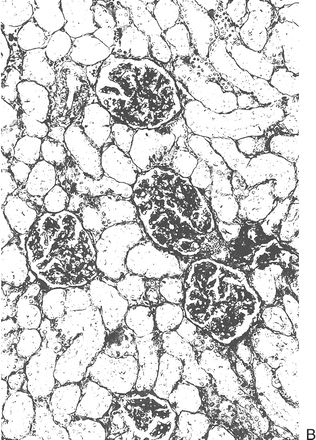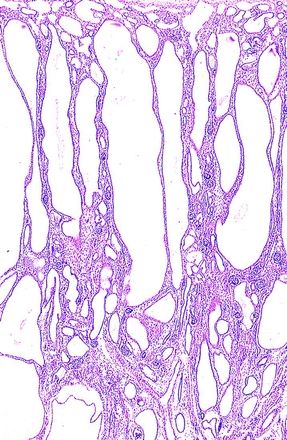
QUESTION 40.1
A. Congenital nephromegaly
B. Oligonephronic hypoplasia
C. Renal dysplasia
D. Renal tubular dysgenesis
E. Renal segmental atrophy
2. The condition known as renal segmental atrophy (or Ask-Upmark kidney) is most likely due to:
A. Autosomal dominant genetic defect
B. Autosomal recessive genetic defect
C. Congenital anomaly of ureteral muscle
D. Segmental hypoplasia
E. Vesicoureteral reflux
3. The photomicrograph shows the histopathologic appearance of an enlarged, cystic kidney removed from a 2-day-old girl. Which of the following is true about this congenital renal condition?

QUESTION 40.3
A. Affected kidneys retain their function
B. Calices, pelvis, and ureter are usually patent
C. Inherited as an autosomal recessive disorder
D. Malformations in other systems are common
E. Most often bilateral
4. Which of the following developmental anomalies has been linked to maternal use of angiotensin-converting enzyme (ACE) inhibitors and maternal cocaine abuse?
A. Congenital hydronephrosis
B. Renal dysplasia
C. Renal hypoplasia
D. Renal segmental atrophy
E. Renal tubular dysgenesis
5. A 9-month-old infant comes to clinical attention because of renal insufficiency and enlarged kidneys. Radiologic and sonographic studies show large hyperechoic kidneys. A renal biopsy shows the changes depicted in this photomicrograph. Which of the following pathologic lesions is most likely to be associated with this kidney condition?

QUESTION 40.5
Stay updated, free articles. Join our Telegram channel

Full access? Get Clinical Tree


